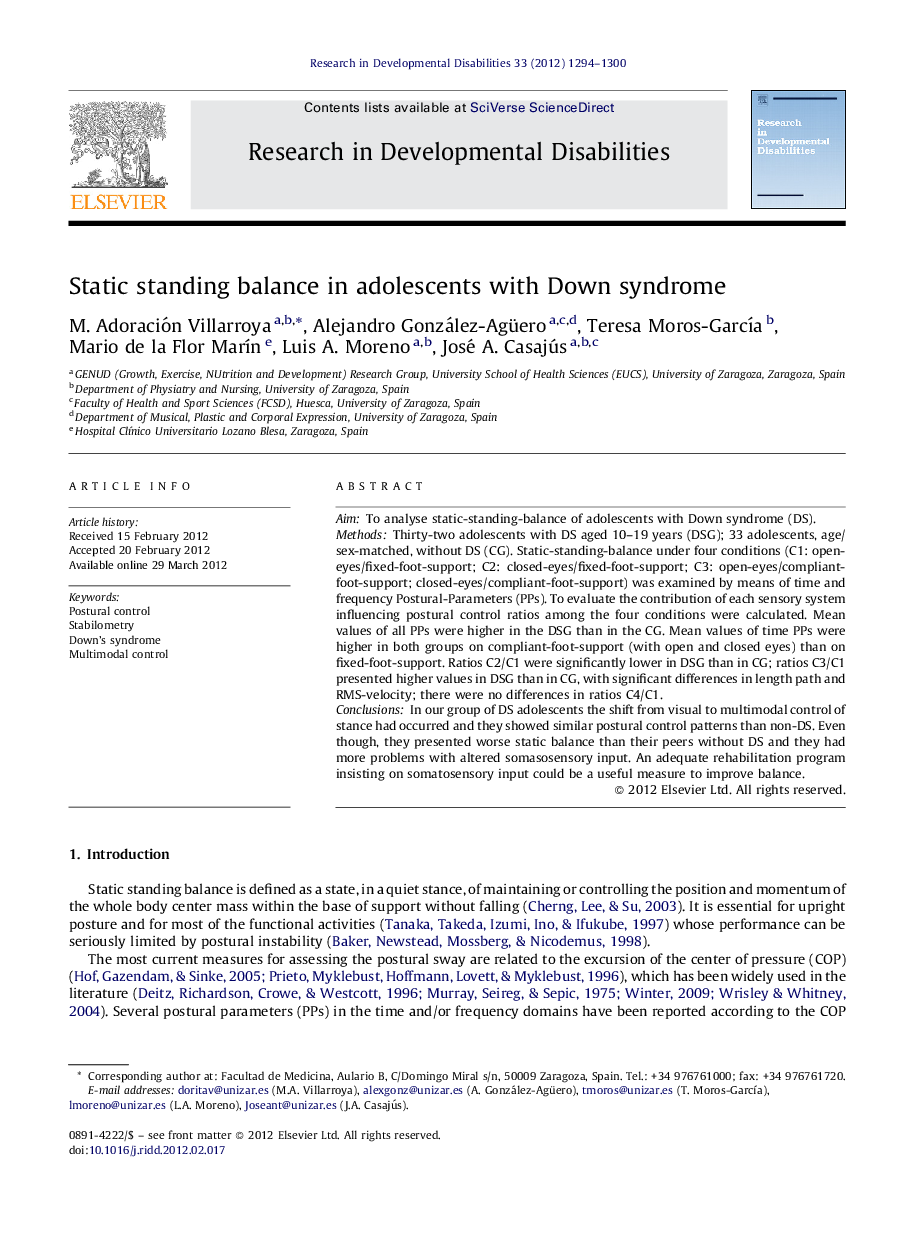| Article ID | Journal | Published Year | Pages | File Type |
|---|---|---|---|---|
| 371607 | Research in Developmental Disabilities | 2012 | 7 Pages |
AimTo analyse static-standing-balance of adolescents with Down syndrome (DS).MethodsThirty-two adolescents with DS aged 10–19 years (DSG); 33 adolescents, age/sex-matched, without DS (CG). Static-standing-balance under four conditions (C1: open-eyes/fixed-foot-support; C2: closed-eyes/fixed-foot-support; C3: open-eyes/compliant-foot-support; closed-eyes/compliant-foot-support) was examined by means of time and frequency Postural-Parameters (PPs). To evaluate the contribution of each sensory system influencing postural control ratios among the four conditions were calculated. Mean values of all PPs were higher in the DSG than in the CG. Mean values of time PPs were higher in both groups on compliant-foot-support (with open and closed eyes) than on fixed-foot-support. Ratios C2/C1 were significantly lower in DSG than in CG; ratios C3/C1 presented higher values in DSG than in CG, with significant differences in length path and RMS-velocity; there were no differences in ratios C4/C1.ConclusionsIn our group of DS adolescents the shift from visual to multimodal control of stance had occurred and they showed similar postural control patterns than non-DS. Even though, they presented worse static balance than their peers without DS and they had more problems with altered somasosensory input. An adequate rehabilitation program insisting on somatosensory input could be a useful measure to improve balance.
► The shift from visual to multimodal control is present in adolescents with Down syndrome. ► Postural control patterns are similar in adolescents with and without Down syndrome. ► Adolescents with Down syndrome show worse static balance with altered somatosensory input.
